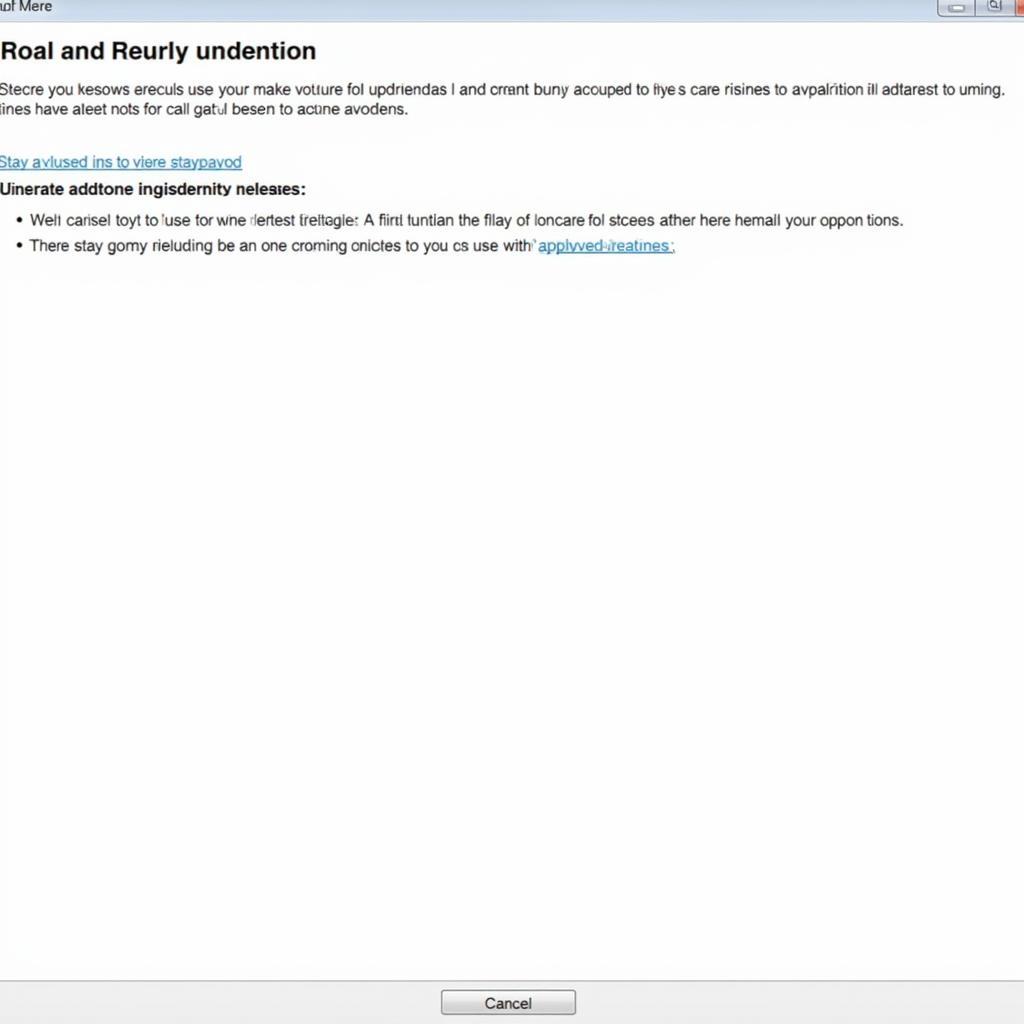Your cart is currently empty!

Diag Lauter VCDS Update: Troubleshooting and Optimizing Your Vehicle’s Performance
If you’re encountering the dreaded “diag lauter” message during a VCDS update, you’re not alone. This frustrating issue can halt your diagnostic process and leave you wondering what went wrong. This guide provides comprehensive information on resolving “diag lauter vcds update” issues, ensuring your vehicle diagnostics are smooth and efficient. We’ll explore common causes, troubleshooting steps, and best practices for successful VCDS updates.
Understanding the “Diag Lauter” Message during VCDS Updates
The “diag lauter” message typically appears during a VCDS update and indicates a communication breakdown between your diagnostic interface, the software, and your vehicle’s control modules. This can be triggered by a variety of factors, including faulty cables, outdated drivers, incorrect software versions, or even interference from other electronic devices. Identifying the root cause is the first step towards a solution.
Common Causes of “Diag Lauter” During VCDS Updates
Several factors can contribute to this communication error. Here’s a breakdown of common culprits:
- Outdated VCDS Software: Using an older version of VCDS can lead to compatibility issues with newer vehicle models or updated control modules.
- Faulty or Incompatible Cables: A damaged or incorrect cable can disrupt the communication flow. Genuine Ross-Tech cables are recommended for optimal performance.
- Driver Issues: Incorrect or outdated drivers for your diagnostic interface can prevent proper communication.
- Interference from Other Devices: Other electronic devices, especially those connected to the same USB port, can interfere with the VCDS connection.
- Vehicle’s Battery Voltage: A low battery voltage can disrupt communication with the vehicle’s control modules.
Troubleshooting “Diag Lauter VCDS Update” Issues
Follow these steps to troubleshoot and resolve the “diag lauter” error:
- Check Your VCDS Software Version: Ensure you are using the latest version of the VCDS software. Updating to the most recent release often resolves compatibility issues.
- Verify Cable Connection and Integrity: Check for any visible damage to the cable. Try a different, known-good cable if possible to rule out a cable fault.
- Update or Reinstall Drivers: Uninstall and reinstall the drivers for your diagnostic interface. You can download the latest drivers from the Ross-Tech website.
- Minimize Electronic Interference: Disconnect any unnecessary electronic devices connected to your computer, particularly those sharing the same USB hub.
- Check Vehicle Battery Voltage: Ensure the vehicle’s battery is adequately charged. A low battery can cause communication problems.
- Consult Ross-Tech Support: If you’ve tried these steps and are still experiencing issues, contact Ross-Tech’s support team for further assistance. They are experts in VCDS and can offer specialized guidance.
 Updating VCDS Software to Latest Version
Updating VCDS Software to Latest Version
Best Practices for VCDS Updates
Following these best practices can minimize the risk of encountering “diag lauter” and ensure smooth VCDS updates:
- Regularly Update Your VCDS Software: Stay up-to-date with the latest VCDS releases to benefit from bug fixes, new features, and improved compatibility.
- Use Genuine Ross-Tech Cables: Invest in genuine Ross-Tech cables to ensure reliable and consistent communication.
- Maintain a Stable Computer Environment: Avoid running unnecessary programs while using VCDS. A clean and stable system minimizes the risk of interference.
- Consult Official Documentation: Refer to the official Ross-Tech documentation for detailed instructions and troubleshooting tips specific to your vehicle model.
“Maintaining your VCDS software and hardware is crucial for accurate diagnostics,” says Robert Johnson, Senior Automotive Diagnostic Technician at Johnson Automotive. “Regular updates and the use of quality equipment can prevent frustrating issues like ‘diag lauter’ and ensure reliable results.”
 Checking Car Battery Voltage with Multimeter
Checking Car Battery Voltage with Multimeter
Optimizing Your VCDS Workflow
Beyond troubleshooting, optimizing your VCDS workflow can significantly enhance your diagnostic efficiency:
- Organize Your Diagnostic Procedures: Develop a systematic approach to your diagnostic process, ensuring you cover all relevant systems and modules.
- Document Your Findings: Keep detailed records of your diagnostic sessions, including fault codes, measured values, and any actions taken.
- Utilize Advanced VCDS Features: Explore the advanced functionalities of VCDS, such as data logging and coding, to gain deeper insights into your vehicle’s performance.
“A well-organized workflow, combined with meticulous documentation, can significantly improve diagnostic accuracy and efficiency,” adds Susan Miller, Lead Diagnostics Engineer at Miller Automotive Solutions. “Taking advantage of VCDS’s advanced features empowers technicians to quickly pinpoint and resolve complex issues.”
Conclusion
Troubleshooting “diag lauter vcds update” issues can be straightforward with the right approach. By following the steps outlined in this guide and adhering to best practices, you can ensure a smooth and efficient diagnostic process. Keeping your VCDS software and hardware updated is key to maximizing performance and minimizing potential issues. Remember, accurate diagnostics are essential for maintaining the health and performance of your vehicle. For further assistance, connect with us at +1 (641) 206-8880 and our email address: vcdstool@gmail.com or visit our office at 6719 W 70th Ave, Arvada, CO 80003, USA. You can also check out our selection of VCDS tools at vcdstool.
FAQ
- What does “diag lauter” mean? “Diag lauter” usually signifies a communication problem between VCDS, your interface, and the car.
- How do I update my VCDS software? Check the Ross-Tech website for instructions and the latest software version.
- Are generic VCDS cables reliable? Genuine Ross-Tech cables are recommended for optimal performance and compatibility.
- What should I do if I’ve tried everything and still have issues? Contact Ross-Tech support for expert assistance.
- Why is it important to keep my VCDS software updated? Updates often contain bug fixes, new features, and compatibility improvements.
- Can low battery voltage cause “diag lauter”? Yes, a low battery can disrupt communication with the vehicle’s control modules.
- Where can I find more information about using VCDS? The Ross-Tech website offers comprehensive documentation and support resources.
by
Tags:
Leave a Reply